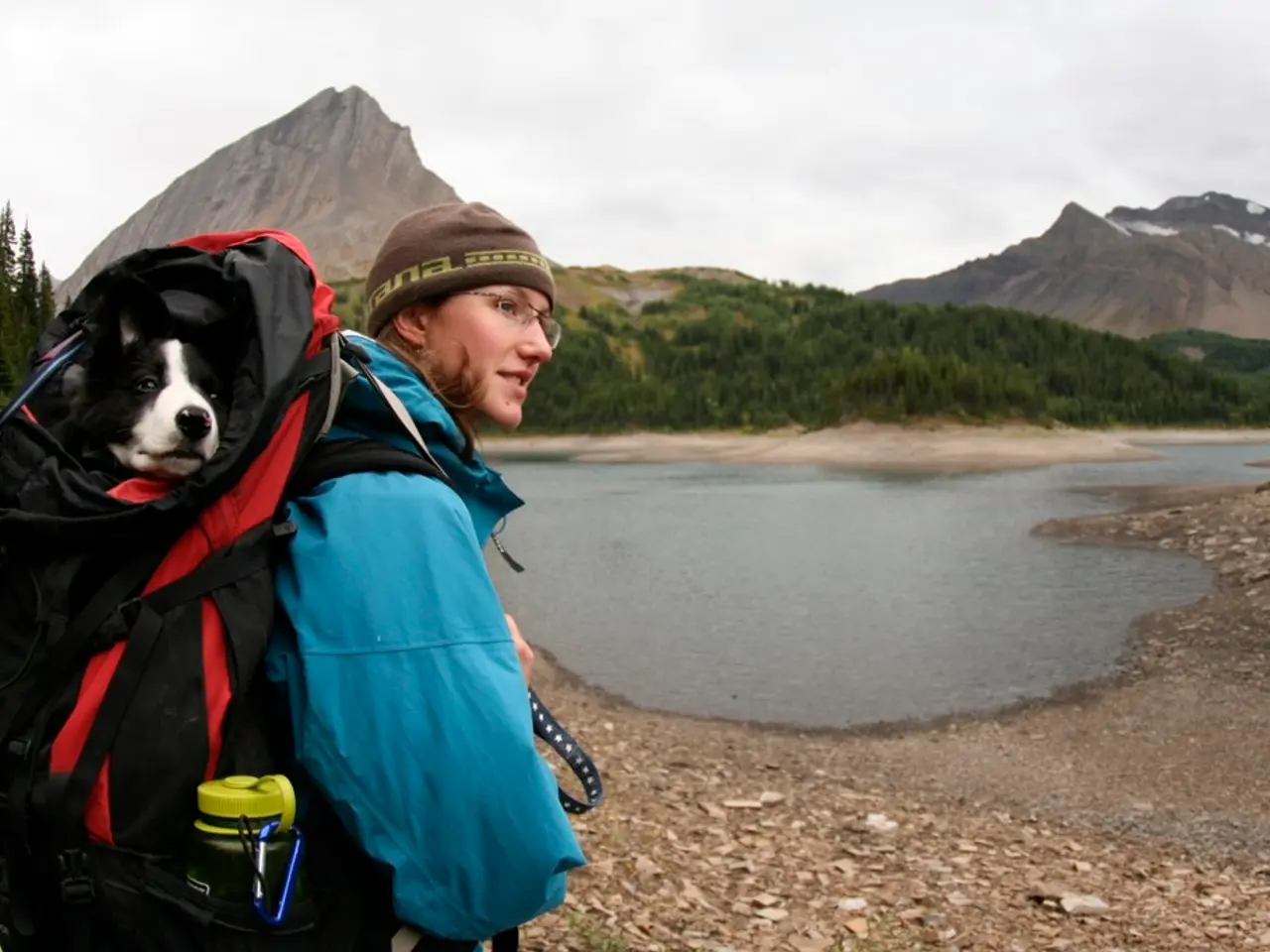Exploring Trails with Canines: An Expert Offers Her Prime Recommendations for Hiking with Dogs
Preparing for a Safe and Enjoyable Hike with Your Dog
Hiking with a dog can be a wonderful way to bond, provide exercise, and offer mental stimulation for both you and your furry companion. However, it's crucial to be well-prepared to ensure a safe and enjoyable adventure for both you and your dog. Here's a list of essential items to bring when embarking on a hike with your dog.
Leash (around 6 ft) and Secure Dog Collar or Harness
A leash and a secure collar or harness are essential for maintaining control and identification on the trail. Harnesses, which are gentler and more secure for hiking, are highly recommended.
Collapsible Food and Water Bowls
Collapsible food and water bowls are handy for easy feeding and hydration while on the move.
Dog Food and Treats
Pack slightly more food than usual to account for the extra energy expenditure during the hike.
Dog First-Aid Kit
A dog first-aid kit is a must-have, containing items like gauze, bandages, antiseptic, pain relief, antihistamines, and emergency contacts. It's critical, especially when vets may be far in the wilderness.
Paw Protection
Protect your dog's paws from rough terrain, hot or cold surfaces with items like dog boots or paw balm.
Dog Towels
Bring a dog towel to clean muddy or wet paws and coat after hikes or swimming.
Poop Bags
Clean up after your dog and follow Leave No Trace principles by carrying poop bags.
Optional but Useful Gear
Consider optional but useful gear such as a dog backpack to carry supplies, dog nail clippers or brush, safety lights or collar light for visibility in low light, and pet-safe insect repellent.
Additional Items for Longer Hikes or Specific Conditions
For longer hikes or specific conditions, consider additional items like a cooling vest, life jacket, and GPS tracker.
Preparation and Training
Before heading out, research the trail to check its dog-friendliness, note any specific regulations, and plan rest stops. Familiarize yourself with basic first aid for dogs, including how to treat common injuries and identify signs of distress. Inform someone of your hiking plans, especially if you're walking solo, including your route and expected return time.
Work on your dog's recall to ensure they can respond reliably to recall cues. Keep a watchful eye out for potential dangers, including from wildlife.
Staying Safe and Comfortable
To avoid heat stroke, hike during cooler parts of the day, carry plenty of water, and take frequent breaks in the shade. In cold weather, dress your dog appropriately.
Share your location with a friend or family member if walking in more remote areas. Start your hike early in the day to avoid the peak heat and give yourself plenty of daylight to walk in.
By bringing these items and following these tips, you and your dog can enjoy a safe and enjoyable hiking adventure together.
[1] https://www.akc.org/expert-advice/lifestyle/essential-gear-for-hiking-with-your-dog/ [2] https://www.outdoorproject.com/adventures/hiking/gear-guide/hiking-with-your-dog/ [3] https://www.petmd.com/dog/care/essential-gear-hiking-with-your-dog [4] https://www.petcoach.co/care/dog/hiking-with-dogs [5] https://www.outdoorgearlab.com/product/best-dog-hiking-gear-2021
- A secure leash and collar or harness are essential for maintaining control and identification on the trails during a hike with your dog.
- Collapsible food and water bowls are handy for easy feeding and hydration while hiking with your pet.
- Pack slightly more dog food than usual to account for the extra energy expenditure during a hike.
- A dog first-aid kit is a must-have, containing items like gauze, bandages, antiseptic, pain relief, antihistamines, and emergency contacts.
- Protect your dog's paws from rough terrain, hot or cold surfaces with items like dog boots or paw balm on hikes.
- Bring a dog towel to clean muddy or wet paws and coat after hikes or swimming, and carry poop bags to clean up after your dog while following Leave No Trace principles.




